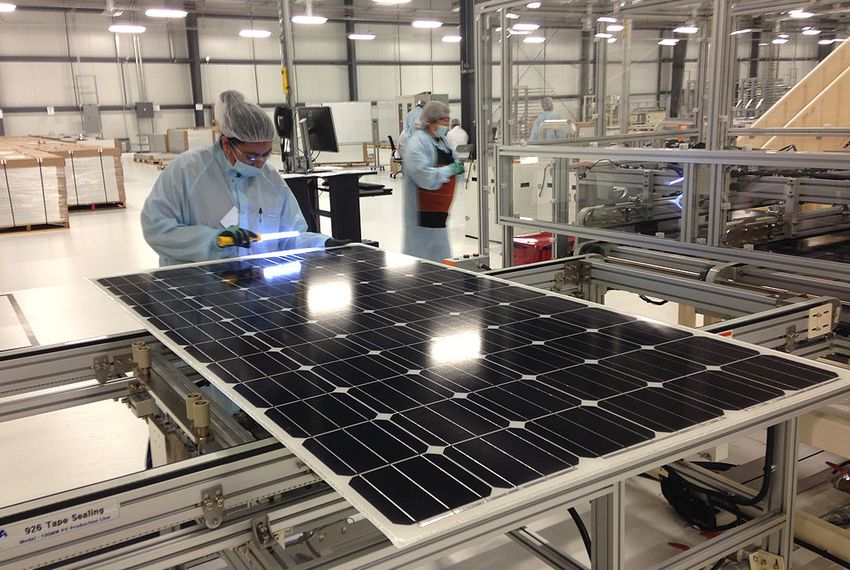What Drove Solar PV Price Reductions?

A new book explores the precipitous decline.
One of the most remarkable trends in energy economics over the last 50 years is the tremendous reduction in solar photovoltaic (PV) prices. The figure below charts prices on a log scale. In words, it shows that prices in 1970 were about 1,000 times higher than they are currently.
I’ve been on a quest to understand this phenomenon – I’d heard conjectures about scale economies driven by generous subsidies for rooftop installations under the German Energiewende or massive subsidies from the Chinese government, but hadn’t dug into it myself.
It turns out that Greg Nemet, a professor at the University of Wisconsin, recently published a book called, How Solar Energy Became Cheap, which provides a number of insights. And, because there are so many promising energy books to review this year (more on that to come!), I’m going to break my book reviews into pieces and devote this post to Nemet’s book.
Can We Replicate the Solar PV Price Reductions?
Understanding the decline in solar PV prices is a hugely important exercise. If we can replicate the solar experience for energy storage, carbon capture and sequestration, small nuclear reactors or other clean technologies, we’d make a lot of progress addressing climate change. Plus, I’ve had a nagging fear that the current ultra-low PV prices were unsustainable, perhaps reflecting huge subsidies that could disappear with the stroke of a pen.
So, how much of the solar experience actually can be applied to other industries? Was it pure serendipity? For example, did solar PV benefit from advances in the computer industry, which similarly use silicon’s semiconductor properties for microprocessors, that were driven by forces completely outside the energy industry? Or, are there key policies or business practices that can be replicated for other clean energy technologies?
Nemet’s book is based on 70 interviews across 18 countries and also draws on quantitative work that he and others have done for academic publications. It’s a pretty good read, especially given the format – there are footnotes, references, tables and figures, so it’s not exactly a light beach read.
The Case for Replication
At a high level, Nemet comes down on the side of replicability. In fact, the subtitle of his book is, “A Model for Low-Carbon Innovation.” I must admit that I started the book with some skepticism – I was worried that he would be so intent on drawing lessons for other industries that he would ignore the serendipitous explanations. I came away more convinced.

Nemet traces solar PV from the first Bell Lab application in 1954 through to about 2016. He argues that there were essentially four epochs when worldwide PV output was dominated by US, Japanese, then German and finally Chinese production. He devotes a chapter to each country and explores the local demand-pull policies (e.g, Japan’s first-of-a-kind net metering policy in 1998) and technology-push policies (e.g., research and development subsidies, such as the creation of the Solar Energy Research Institute, which later became the National Renewable Energy Lab (NREL)).
Nemet also points out that solar PV benefited from the fact that it was hugely scalable and could be applied across a number of niche markets. The Japan chapter explains how companies like Sharp invested in very small-scale solar cells for calculators and bigger niche applications such as lighting offshore oil platforms.
Solar PV prices really plummeted in the last 15 years, so I found the two chapters on the German and Chinese epochs most interesting. In the chapter on China, Nemet tells the fascinating story of Suntech, the first large-scale Chinese solar module manufacturer. The company was founded by Zhengrong Shi, who spent 15 years as a researcher at an electrical engineering lab at the University of New South Wales in Australia before he returned to China in 2001 with a business plan to build a plant to produce 3 MW of solar modules per year. By 2008, Suntech was producing 1,000 MW per year and had over $1 billion in sales. Suntech went bankrupt in 2013 due in part to its decision to acquire an Italian solar developer later accused of massive fraud, but current powerhouse companies such as Trina Solar, JinkoSolar and JA Solar developed closely on Suntech’s heels.
Shi’s story highlights the importance of academic R&D, as Shi was able to convince German customers that Suntech’s modules were high quality based on his relationship to the university research lab. And, Nemet emphasizes how, “Shi’s experience in the lab [gave] him a broad expertise in PV technologies that allowed him to switch technologies quickly when an opportunity for cost-reductions emerged.”
The story of Suntech and its competitors also emphasizes the doggedness of a number of Chinese entrepreneurs including Shi, who shopped his business plan around China for months before he finally found $5 million in financing. Though Nemet mentions Chinese government policies to invest in renewables to spur demand and says obliquely that, “many of these [solar] firms received substantial funding from the local governments,” I was left with the impression that Chinese solar manufacturing was really launched and developed by scrappy, capitalistic entrepreneurs.
A Series of Incremental Improvements
The scale economies in solar PV are pretty mundane – a bunch of incremental improvements in manufacturing processes, panel efficiency, supply chain optimization, and automation rather than one or two breakthroughs in someone’s R&D lab. For example, Nemet describes how early module manufacturers used second-hand manufacturing equipment repurposed from computer microprocessor plants, but as the industry expanded, suppliers for solar-specific machinery emerged.

He also describes how Shi led the switch from using poly-crystalline silicon to cheaper and more efficient mono-crystalline silicon, which is perhaps as close as we come to an ah-ha insight that drove costs down. It’s splitting hairs a bit, but this last example could be learning-by-doing rather than scale economies as the insight didn’t necessarily require huge volumes of production.
In the end, some of Nemet’s messages are encouraging: the forces of capitalism, nudged by government programs, encouraged entrepreneurs who saw a growing market for solar to invest capital and a fair amount of blood, sweat and tears into fine-tuning manufacturing processes that led to significant cost-reductions. I’m going out on a limb a bit as I’m pretty averse to making forecasts without a lot of evidence to back them up, but I don’t see an obvious reason why the price reductions have been exhausted.
As Nemet points out, though, the decline in solar prices took a long time, so even if other industries can replicate this path, they’ll have to figure out a way to do it much more quickly.
Keep up with Energy Institute blogs, research, and events on Twitter @energyathaas.
Suggested citation: Wolfram, Catherine. “What Drove Solar PV Price Reductions?”, Energy Institute Blog, UC Berkeley, September 9, 2019, https://energyathaas.wordpress.com/2019/09/09/what-drove-solar-pv-price-reductions/
10 September 2019
ENERGY INSTITUTE AT HAAS




